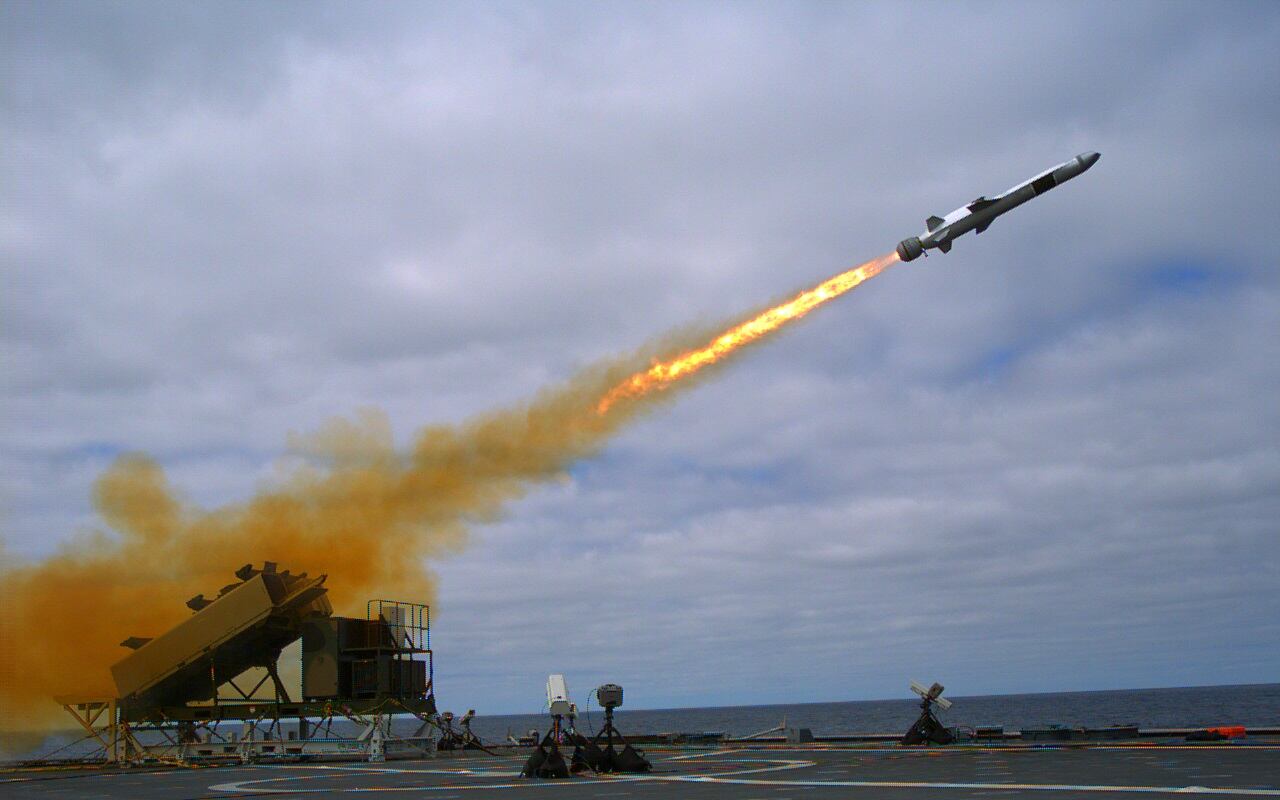WASHINGTON — Raytheon is bullish on the next generation of surface-to-surface missiles coming into the fleet, an award that is expected to drop sometime this summer.
The U.S. Navy is closing in on awarding its over-the-horizon missile, designed to beef up littoral combat ships. It’s widely believed Raytheon will come out on top in the competition. But the company’s top executive sees a much bigger opportunity: an $8 billion market over 10 years and a chance to eat into competitor Boeing’s share of the space.
Raytheon CEO Tom Kennedy said in a Jan. 25 earnings call that he thinks orders of the Naval Strike Missile, developed with Norwegian defense firm Kongsberg, have the potential to be in the thousands, citing the last buy of Boeing’s Harpoon missile, which he said was about 7,000 missiles.
RELATED

The missile is ready to go into production almost immediately, he said.
“This system is not going to go through a 10-year development cycle; it already exists and it’s ready to enter production almost immediately upon award of the contract,” he said. “So lot of great news for the missile company, and we’re very excited about it. The demand signals are there.”

The bidding process for the LCS’ over-the-horizon missile has been fraught, with two major competitors dropping from the process, leaving Raytheon and Kongsberg’s Naval Strike Missile as the team to beat.
Boeing’s Harpoon missile and Lockheed Martin’s Long Range Anti-Ship Missile were pulled from the competition. Both companies felt the competition was skewed toward the Raytheon-Kongsberg offering, Defense News reported in May.
The Naval Strike Missile has a range of more than 100 nautical miles and has target-recognition capabilities that limit the need for another ship or aircraft to hold a track on the target.
The Pentagon’s surface warfare boss said in January that the over-the-horizon missile competition was getting close to wrapping up. Rear Adm. Ron Boxall, of N96, said after getting longer-range anti-ship weapons on surface ships, the next step is to work on how to target adversaries at long ranges.
The Navy is looking at a combination of manned aircraft, unmanned aircraft and submarines as potential capabilities in helping the surface Navy hold adversaries at risk at increasing ranges.
David B. Larter was the naval warfare reporter for Defense News.







